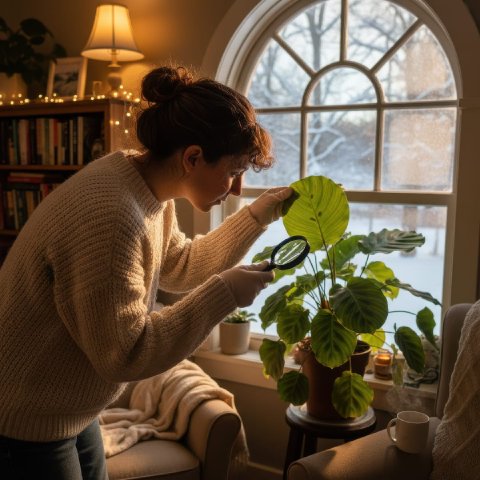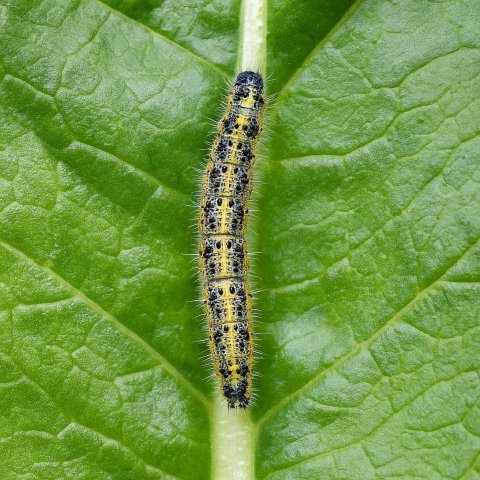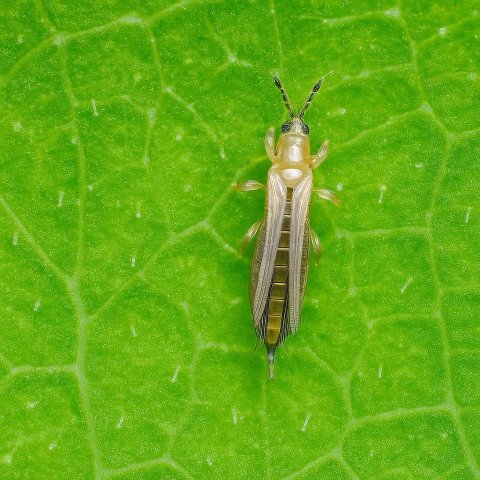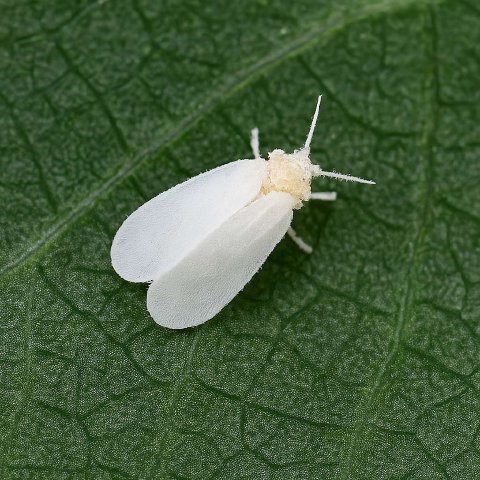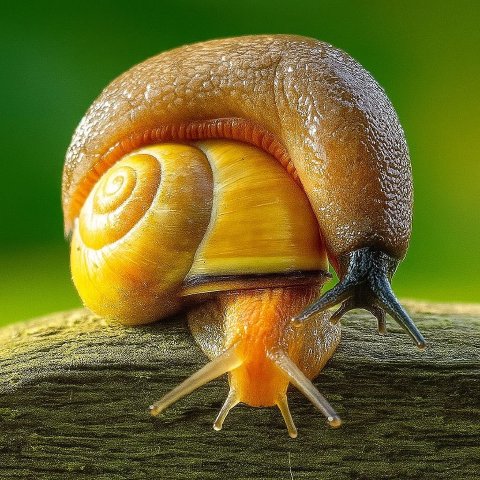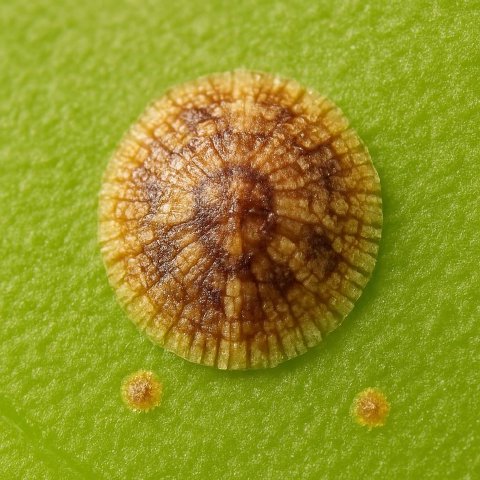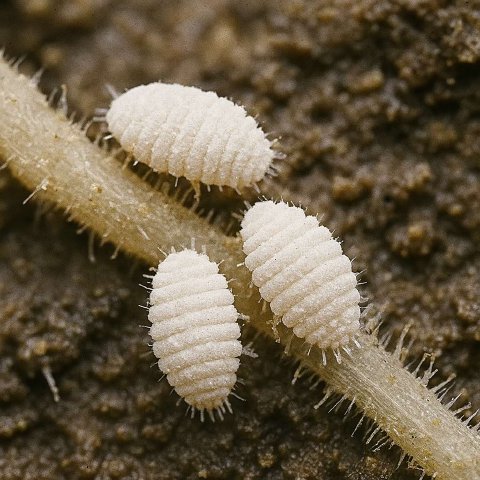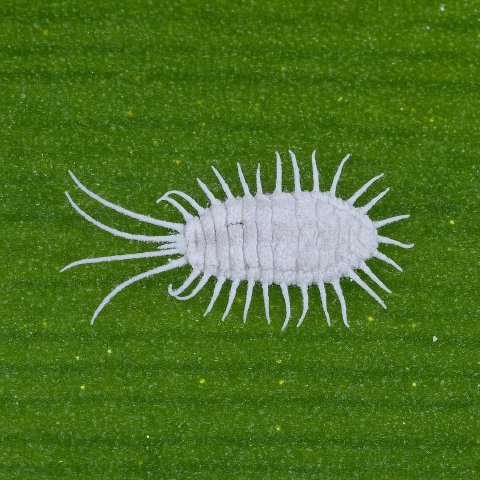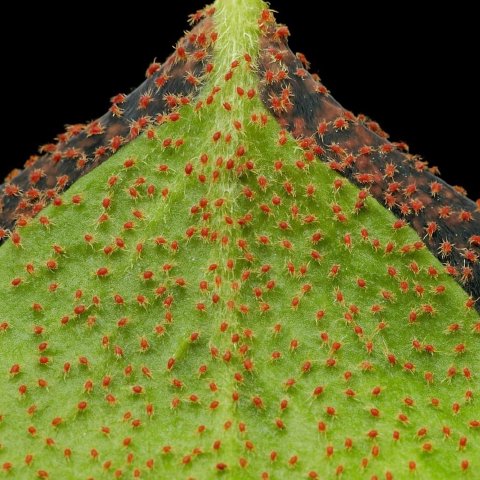🪴 In This Guide 🪴
🔎 What Are Aphids? A Closer Look
Understanding the Pest
Aphids are one of the most common garden and houseplant pests. They are sap-sucking insects that use their sharp mouthparts to pierce tender plant tissue and feed on the nutrient-rich fluids inside.
What makes them so frustrating is their rapid reproduction. A single aphid can give birth to dozens of live young without mating, allowing a small problem to become a full-blown infestation in just a matter of weeks. They are particularly drawn to lush, new growth where the plant tissue is softest.
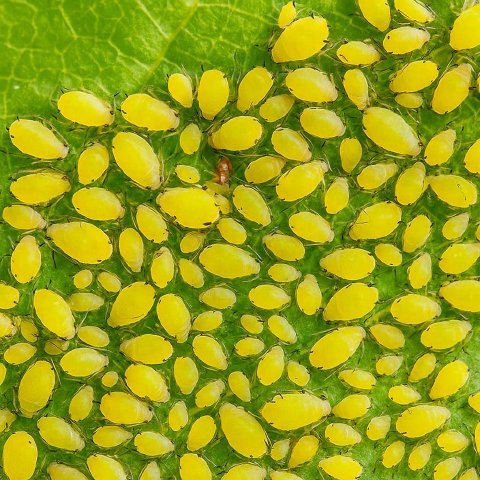
How to Identify Aphids: Signs & Symptoms
Catching an aphid infestation early is key. Here’s what to look for:
- Visible Insects: You’ll often see clusters of tiny (1-3mm), pear-shaped bugs. They can be green, black, yellow, pink, or gray. They tend to congregate on new stems, the undersides of leaves, and around flower buds.
- Sticky “Honeydew”: As aphids feed, they excrete a sugary, sticky substance called honeydew. If you notice a shiny, sticky film on the leaves or the surface below your plant, it’s a classic sign of aphids (or other sap-sucking pests like scale).
- Sooty Mold: The sticky honeydew can attract a black, dusty fungus called sooty mold. While it doesn’t harm the plant directly, it’s unsightly and blocks light.
- Distorted or Stunted New Growth: Aphid feeding can cause new leaves to emerge curled, yellowed, or stunted.
- Ants: Ants are often attracted to the sweet honeydew and will “farm” aphids, protecting them from predators in exchange for food. If you see a trail of ants on your houseplant, check closely for aphids.
🤔 What Causes an Aphid Infestation?
How Do They Get Inside?
Aphids can find their way indoors through open windows, on new plants from a nursery, or even on fresh produce or cut flowers. They are particularly drawn to plants that are:
- Over-fertilized: Excessive nitrogen fertilizer produces lush, weak new growth that is irresistible to aphids.
- Stressed: Plants stressed by improper watering or light are more vulnerable to pests.
🌿 How to Get Rid of Aphids: A Step-by-Step Treatment Plan
Step 1: Isolate the Plant IMMEDIATELY
The moment you spot aphids, move the infested plant away from all other houseplants. Aphids can move from plant to plant, and an isolated problem is much easier to manage.Step 2: Manual Removal (First Line of Defense)
For a light infestation, this might be all you need.
- Rinse Them Off: Take your plant to a sink or shower and use a strong spray of lukewarm water to physically blast the aphids off the leaves and stems. Be sure to spray the undersides of the leaves, too.
- Wipe Them Away: For stubborn clusters, you can gently wipe them off with a damp cloth or a cotton swab.
Step 3: Natural & Organic Treatments
For persistent infestations, follow up your rinse with one of these treatments. Always spray in the evening or in a shady spot to avoid burning the leaves.
- Insecticidal Soap: This is one of the most effective and safest options. It works by breaking down the aphids’ outer shell, causing them to dehydrate. You can buy a pre-made, plant-safe version. Spray the entire plant thoroughly, focusing on where the pests are clustered.
- Neem Oil Solution: Neem oil is a natural insecticide and fungicide.
- Recipe: Mix 1 teaspoon of pure, cold-pressed neem oil and ½ teaspoon of mild dish soap (as an emulsifier) in 1 quart of warm water.
- Application: Shake well and spray all plant surfaces. Repeat every 5-7 days until the aphids are gone.
Step 4: Chemical Treatments (Use with Caution)
For severe and stubborn infestations, chemical pesticides containing pyrethrins can be used. However, these should be a last resort for indoor plants. If you use them, take the plant outdoors for treatment and allow it to dry completely before bringing it back inside.🛡️ How to Prevent Aphids from Coming Back
Proactive Plant Care
- Inspect New Plants: Thoroughly check any new plant before introducing it to your collection.
- Wipe Leaves Regularly: A monthly wipe-down of leaves with a damp cloth can remove dust and any early-stage pests.
- Avoid Over-Fertilizing: Stick to a regular, diluted feeding schedule during the growing season.
- Encourage Airflow: Good air circulation can help deter pests from settling in.
